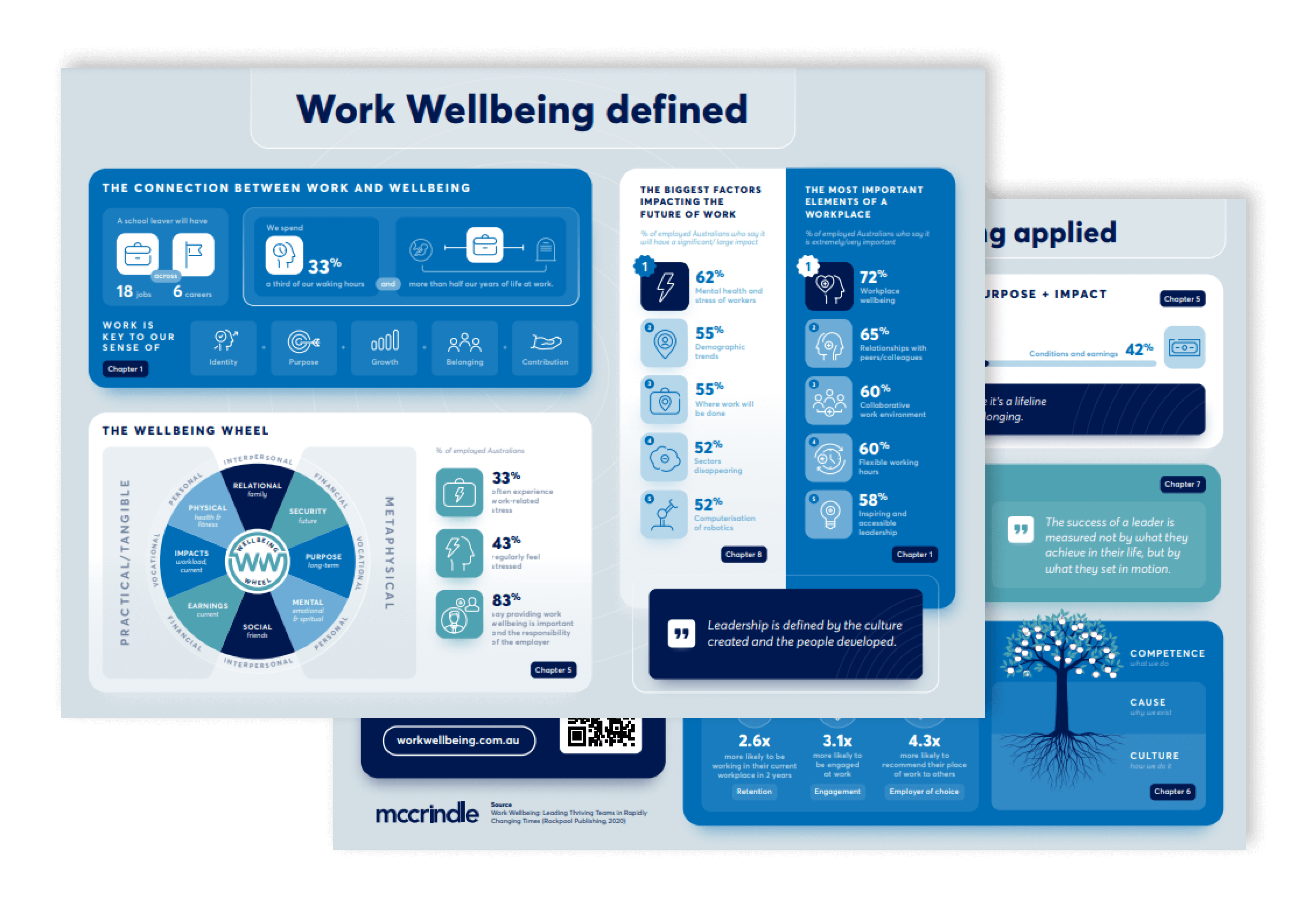Job mobility in Australia

Australia’s job mobility is a long way from job for life- in fact it’s closer to three jobs per decade! Today the national average tenure in a job is 3.3 years (3 years and 4 months), based on voluntary turnover of around 15% per annum.
If this plays out consistently in the life of a school leaver today, and assuming they start their working life aged 18 (in a part-time role) and are retired from all work by 75, they will have 17 different employers in their lifetime. Based on 3 jobs before upskilling or career changing, this means that they will also have 5 separate careers in their lifetime.
Job tenure by age group in Australia today
| Age group | Average job tenure |
|---|---|
| U25 | 1 year 8 months |
| 25-35 | 2 years 8 months |
| 35-44 | 4 years |
| 45+ | 6 years 8 months |
| Average | 3 years 4 months |
Source: HILDA, Department of Employment.
Young people have always had greater job mobility than older workers. Four decades ago (1975) the tenure of Under 25’s per job was the same as today: 1 year and 8 months on average. However, what has changed a lot is that back then workers aged over 45 averaged almost 10 years per job (and why long service leave, set at 10 years, traditionally functioned effectively), while today for this age group it is 6 years and 8 months. In 1975, just 8% of those aged 55+ stayed less than a year while today it is twice this proportion at 15%.
The point is that young people have always had shorter job tenure than older workers, moving in and out of education, career changing, upskilling, and moving home which impacts on employment. What is unique today is that the bulk of the workforce is following the lead of young people with more retraining, career changing, home moving, and shifting from employment to self-employment (and back!) than ever before. Plus with the shift to a more flexible employment market, marked by more temporary staff, contractors, more parents in the workforce seeking flexibility based on their family arrangements, a more empowered and confident workforce happy to leave a job and try for something else, and with technology providing easier opportunities to be a passive job-seeker (through online recruitment, job search apps etc.), we are seeing, and will continue to see more voluntary workforce mobility. Four decades ago, just 1 in 10 workers was employed on a part time basis while today this is more than 3 in 10. And while some of the increased job separations have been driven by economic uncertainties, redundancies, employers shifting recruitment to contract roles, the biggest part of job mobility is voluntary, with job moves based on employment opportunity, life balance, or personal reasons more than twice as large as involuntary job separations (such as redundancies and temporary roles ending).
Housing mobility (where the average renter stays just 1 year and 10 months) is linked very strongly to youth job mobility (1 year and 8 months per job) and interstate mobility (the fastest growing state is Western Australia with a growth rate of 3.1%) is similarly linked strongly to employment opportunities (Western Australia has the highest private sector full time earnings and the nation’s lowest unemployment rate).
So in an era where job opportunity matters more than job security and where flexibility and mobility matter more than stability and job loyalty, the trends which have created shorter job tenure are here to stay. In an era of employment flexibility and empowered workers, employers can no longer rely on job salary and security to attract top performers and retain the emerging generation of leaders.
Find Out More
Next Event:
The next Analyse Australia event is on Friday 19th June 2020 in Sydney.
We would love to extend an invite to you to join us over breakfast for a great morning of learning and networking, as we analyse Australia.
Friday 19th June 2020
7:00 – 9:30am Sydney,
Venue TBC
Download the report to find out more here.





